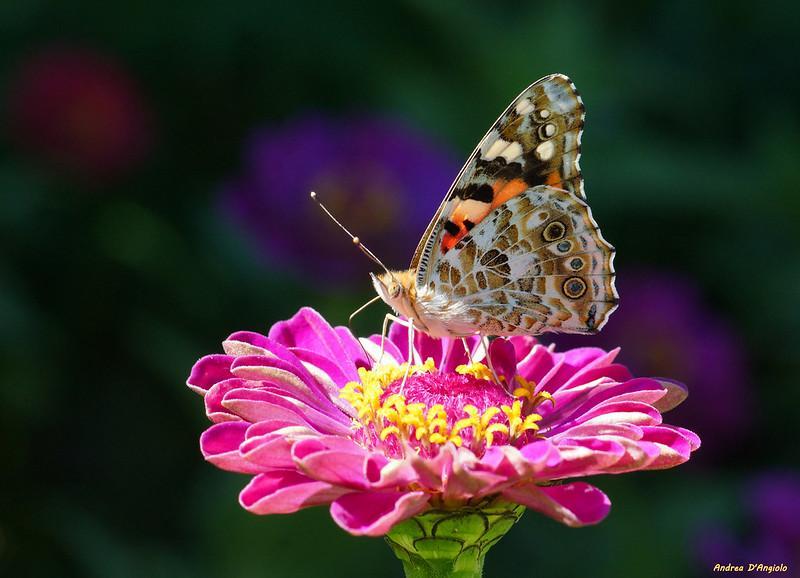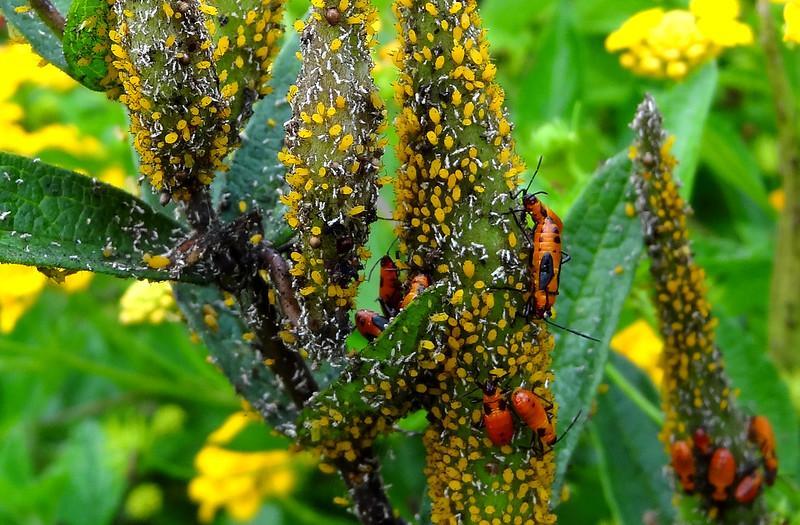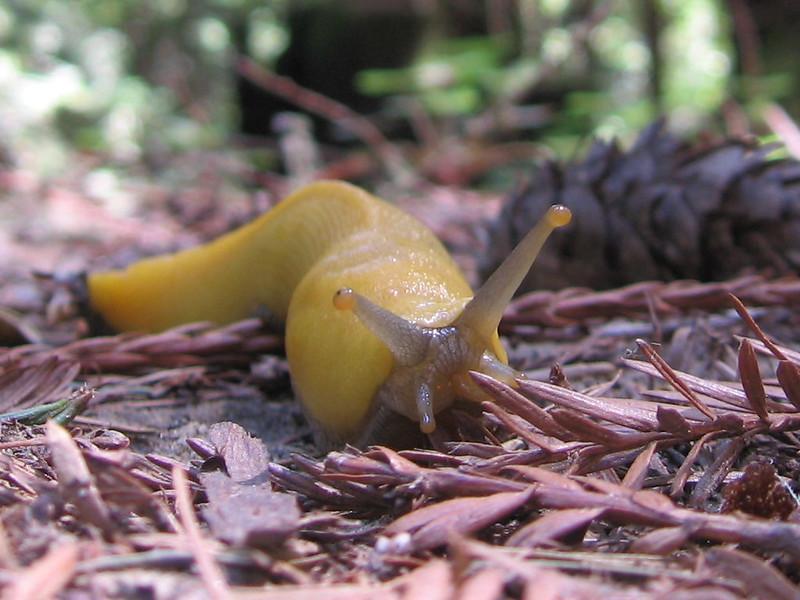Planting Zinnias is a quick and easy way to add a splash of color to your landscape. They grow quickly from seed and blossom lavishly for several months. I myself have Zinnia in my backyard, and it never ceases to amuse me. In this article, let’s talk about what is eating my zinnia leaves.

Aphids, spider mites, and whiteflies frequently attack zinnias in hot and dry conditions.
In fact, in my opinion, there is nothing more lovely than having a yard full of healthy, well-maintained Zinnias with magnificent blossoms and lush, green foliage.
However, despite all their magnificence, zinnias sometimes fall victim to pests and diseases. And, it is distressing to watch zinnia leaves gradually get consumed by pests.
The most damaging bugs to the health of a zinnia plant are aphids, mites, and thrips, which all use their sucking mouths to drain fluids from zinnia leaves and stems. In addition, some fungal diseases such as leaf spots or bacterial leaf spots can also create holes in your Zinnia leaves by “eating” away at the leaf tissue.
What Is Eating My Zinnias?
Since different pests have different eating habits, they leave different chewing patterns on the leaf. So, when trying to determine what kind of insect or other creature is eating your zinnia plants, one must inspect the damage done to the leaves.
Continue reading if you want to learn more!
Caterpillars
Due to their voracious appetites, caterpillars can be an absolute pain to have in your garden. The zinnia plant is a significant target for caterpillars because it draws these pests with its vibrant colors and tempting nectar.

Cabbage loopers can be distinguished from most other caterpillars by their distinctive looping movement.
Zinnia leaves are a favorite food of numerous species of caterpillars. These include Cutworms, Armyworms, Leafrollers, and Cabbage Looper larvae. So if the leaves of your Zinnia plant appear to have been chewed in a circular pattern and there are holes that range in size from medium to huge, caterpillars are likely to blame.
However, since the vast majority of caterpillars are nocturnal eaters, it is possible that you won’t always spot them on your plants.
In caterpillars, leafrollers can be a significant issue when the infestation is severe. They strip the plant of its leaves and decimate the flower buds before the flowers have even opened.
Cabbage looper caterpillars eat on the undersides of lower leaves while they are young. However, as they grow larger, they consume entire flowers and leaves.
Then there are armyworms and cutworms. These feed on both the blooms and the leaves of zinnia plants. They can skeletonize the entire plant in just a few short days’ time.
Control
If the infestation is in an early stage, you can handpick the caterpillars of the plants. However, finding them could be a bit of a challenge. So, the best way to control caterpillars is to eradicate weeds around the plants because this is where the caterpillars live.
If that doesn’t work, try spraying your plants with neem oil, soap, and water mixture. Additionally, I would suggest that you place cardboard at the root of your plants to serve as a physical barrier.
Repeated applications of Bacillus thuringiensis can also help you to get rid of a caterpillar infestation. Moreover, you can introduce beneficial insects such as Lacewing larvae, Tachinid flies, and Parasitic wasps to your lawn to keep caterpillar populations under check.
Aphids
Zinnia, like many other plants, is susceptible to attack from aphids. In fact, aphids are one of the most frequently encountered pests responsible for the destruction of your zinnia leaves.

Your zinnia plant’s leaves may curl and become yellow if there are a lot of aphids on them.
The majority of aphids are green, but there are also black aphids, and it is the black aphids that have the greatest fondness for the zinnia leaves.
These insects love to bore holes into the leaves and stems of the zinnia plant to access the plant’s fluids, which they then consume.
Even though they are quite minuscule, you should be able to find them if you look very carefully. They have long antennae and bodies that are shaped like pears.
However, if you cannot locate any aphids on the plant, you can examine the damage done to the leaves to determine whether or not aphids are to blame. In most cases, the holes are noticeable enough to make one aware of the damage done to the plant.
Because of how quickly they proliferate, it is essential to get rid of them as soon as possible before they can spread.
Control
You can use a strong stream of water to hose the aphids off the plants if you suspect they are eating the leaves on your zinnia plants. However, if it doesn’t work, you can try spraying your plants with neem oil, soap, and water solution.
To control aphids, insecticidal soap sprays can be used. However, blooming plants should only be sprayed in the late evening to avoid harming hummingbirds or helpful insects. This solution must be sprayed at least three times every week to get rid of the aphids.
Natural predators like parasitic wasps also help keep aphids away from your zinnia plants. This technique is effective because female parasitic wasps use aphids as hosts for laying their eggs. The larvae consume the aphids’ bodies once the eggs hatch.
RELATED: Aphids on Indoor Houseplants: 10+ Smart Ways to Get Rid of Them!
Japanese Beetle
It’s possible that plant owners who aren’t familiar with these insect pests won’t be able to recognize the Japanese Beetle as the bug responsible for the damage. However, Japanese beetles are another potential insect pest that could be behind eating your zinnias.

Japanese beetles are a significant pest of flowers, fruits, vegetables, field crops, and turf.
They are a type of flying insect. Their bodies are an iridescent bright green color, and the coverings of their wings are a coppery color. The Beetle won’t just eat holes in the leaf; it will consume almost the entire leaf, leaving behind only the veins.
The leaf that has been damaged will have an appearance of lace. This usually happens around the end of June and into August most years. They are also capable of creating holes in the flowers of your zinnias.
Control
Be on the lookout for beetles in your yard and garden beginning in the latter half of June or the beginning of July. It would help if you started managing them when they first appeared, or the matters could go out of your hand.
Because beetles are drawn to damaged leaves, reducing the number of insects on plants should reduce the number of beetles overall in your garden.
Nonetheless, dish soap is one method that can be used to eradicate Japanese beetles. You could also try a pesticide based on pyrethrin or oil from neem.
It is best to apply these as soon as you notice any signs of beetles so that you can maximize their effectiveness.
Earwigs
Earwigs are slender insects that earned their name from an old European superstition: they crawl into people’s ears while asleep and tunnel into their brains.

Earwigs are strange-looking insects with forceps or pincers sticking out of the abdomen.
They are a reddish-brown color, and their wings are relatively short. Earwigs will feed on the foliage and zinnias blossoms if they are present in high numbers in a garden.
In most cases, earwigs can be found feeding on the juicy Zinnia flowers between the months of summer and fall. They leave irregularly shaped holes in the foliage and can even damage zinnia flowers if they get a chance.
The holes are relatively tiny compared to those of a snail or a caterpillar. Earwigs are less active during the day and more active throughout the night.
Control
Typically, earwigs eat decaying plant material. They will also consume aphids, grubs, and armyworms, among other insects. They may therefore benefit your zinnias. However, earwigs can consume living plants if they are found in large numbers. The most effective method for getting rid of earwigs is to combine water and 70% alcohol.
You may also use shallow bowls of vegetable oil as earwig traps by placing them under the infested plant. Applying several layers of petroleum jelly to the stem of your zinnia plant is an even easier fix. This will stop earwigs from climbing up the stem to get to your leaves.
RELATED: How to Get Rid of Earwigs (Pincher Bugs) Naturally in Homes and Gardens?
Snails & Slugs
Have you noticed any damage to the foliage of your zinnias this spring or summer? Are the leaves’ veins raggedly punctured by chewing? If the answer is yes, the creatures consuming your zinnias are slugs. Slugs typically chew poorly and don’t eat cleanly. Additionally, as they move across the plants, they frequently leave behind shiny, silvery trails.

With their soft, moist-appearing bodies, slugs resemble snails without shells.
Slugs and snails can be a significant issue for many gardeners because they eat almost all leaves and flowers. Slugs, in large numbers, can destroy entire zinnia plants. Slugs love wet regions and spend the daytime hiding behind rubbish. Additionally, you will notice any damage to your Zinnia leaves in the morning because slugs typically feed at night.
Slugs and snails have a very rapid egg-laying and hatching cycle; if you do not take action to stop them, your garden will soon be overrun with an infestation of these pests, and your plants will suffer as a result of their voracious appetites.
Control
Manually removing slugs from your zinnias is one way to get rid of them. You’ll need to check on your zinnias at night. Check your plants for any slugs that may be there.
Take them out of the plant. To get rid of them, place a pail of soapy water. Alternatively, you might use salt. If you have the budget, you can use electric copper fences around your zinnia plants to keep slugs and snails out.
However, if your budget is short, sprinkle diatomaceous earth on the ground next to the zinnia plant. Slugs creep on diatomaceous earth, which rips them apart.
Rabbits & Deer
Deer and rabbits can also make a meal of zinnias. In the event that they are responsible, the affected leaf will likely be lost in its whole, leaving behind only the petiole and the stem. You could also investigate the area close to your garden for tracks and droppings left by rabbits and deer. Deer and bunnies both frequently graze at night.

Zinnias are a favorite of rabbits, and they will enjoy it during the day.
Control
An efficient barrier can keep out deer and rabbits. You can use chicken wire to accomplish this. However, because bunnies love to dig, it needs to be buried at least 6 inches underground.
Final Thoughts
As you can see, a wide variety of animals have the potential to consume the leaves of your zinnia plants. The good news is that most of them can be controlled or eliminated.
Always keep an eye on your Zinnias so that you can quickly identify any insect or animal that begins to eat your plants as soon as it happens. Early diagnosis makes it far simpler to control the pest and stop it from causing additional harm to the plants.
Also, it would help if you always used low-toxicity insecticides to minimize the amount of damage done to your zinnias and the beneficial insects in your garden.
Frequently Asked Questions
What can I spray on my zinnias?
Spraying your plants with a solution of neem oil, soap, and water is the best treatment if you suspect insects are the reason behind eating your zinnia leaves. Although neem oil or insecticidal soap will kill any beneficial insects that may be on the plant when applied, there is no residual effect.
What is wrong with my zinnias?
The most prevalent issue with zinnias is powdery mildew, a disease that causes the leaves to turn pale and eventually brown. However, zinnias can also be susceptible to several insect pests. Aphids, spider mites, and whiteflies can significantly harm zinnia plants, especially in hot, dry conditions.
How do you protect zinnias from bugs?
If you want to keep aphids and beetles from eating your zinnia plants, try using their natural enemies instead of insecticides. Ladybugs and praying mantis are two examples. Other options include the use of neem oil and insecticidal soap. However, the use of herbicides may be necessary in cases of severe infestations.
How do you treat bacterial leaf spots on zinnias?
If you find spots on your zinnia plants, you should probably remove the affected plant. It will help in the prevention of disease spread to other nearby plants. To cure these spots, you can also apply fungicides like mancozeb, copper fungicides, and chlorothalonil.
Can you eat Zinnia?
Since zinnia leaves have a fairly bitter taste, it is preferable to use them as a decorative garnish rather than a delicious ingredient. As for the flowers, the petals can be used in salads, tacos, and desserts, among other things! Although the entire head is supposedly edible, most people only use the petals.
Why do dogs eat zinnia leaves?
Dogs eat zinnias because they like the flavor or because they are bored. It’s also possible for dogs to have intestinal parasites; in this case, consuming this flower will help them eliminate the unpleasant creatures. Sometimes they may consume zinnia leaves to vomit.
Sources For Further Reading
Zinnia Insect Pests & Diseases. (2022). Retrieved 2 August 2022, from https://hgic.clemson.edu/factsheet/zinnia-insect-pests-diseases/
Managing Pests in Gardens: Floriculture: Zinnia—UC IPM. (2022). Retrieved 2 August 2022, from http://ipm.ucanr.edu/PMG/GARDEN/FLOWERS/zinnia.html
Zinnia Diseases. (2022). Retrieved 2 August 2022, from https://extension.psu.edu/zinnia-diseases
What’s wrong with my zinnias? The University of Minnesota Extension. (2022). Retrieved 2 August 2022, from https://apps.extension.umn.edu/garden/diagnose/plant/annualperennial/zinnia/leavesholesorchewed.html
Editor’s Recommendations
What Are Gnats Cacti and How to Get Rid of Them for Good?
Do Succulents Attract Spiders? Yes, They Do! Let’s Learn How to Keep Them Away?







